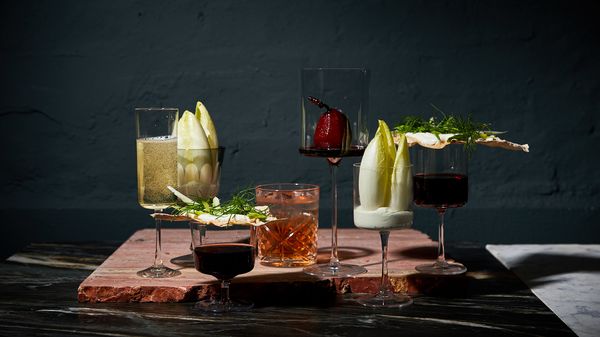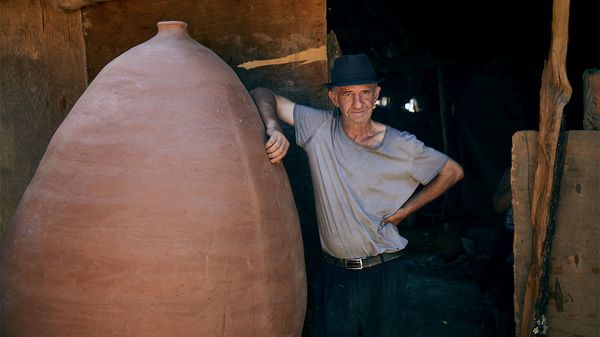The successful ceramic designer spent her childhood in Japan, before studying Design at the renowned Central Saint Martin’s College of Art & Design. These days, Reiko lives and works in London and is heavily influenced by her ancestral home, Japan.

Reiko Kaneko traverses borders and moves between worlds, sometimes literally
You spent your early childhood in Japan. What was life like then?
I grew up in a very rural setting on a farm in the northern Japanese prefecture of Fukushima. My mother was English and my father was Japanese. At the time, I didn’t want to learn English because children usually want to be just like all the others, not stand out. My father died when I was six and my mother moved back to England with me. So for most of my childhood I went to school in England. But we regularly travelled back to Japan and I still go there often. I find Japan extremely inspiring and I’m always discovering wonderful companies. For example, I work closely with Shotko Glass, a traditional producer of hand-blown glass from Tokyo.
Who were the people that influenced you most as a child?
Definitely my grandmother. She was working as a teacher of tea ceremonies. Amongst the things I learned from her is my love of traditions and tiny details. Even today, I make tea according to this tradition.
How do your Japanese roots express themselves in your work as a ceramic designer today?
As a craftsperson, I am very attracted to the philosophy of valuing hand-made objects. That’s why I find the principle of Wabi Sabi so alluring: an aesthetic concept that encourages people to notice beauty in everyday life. A beauty that is hidden, but accessible to everyone and thus very democratic.
People in Japan have great respect for older people and tradition…
That’s true. Add to that the special appreciation of materials, which I love a lot. This respect is really important to me. The material can be the light a photographer uses for their work, or the words an author chooses. It requires a lot of experience to use materials well.
How do the two cultures differ in terms of cuisine?
When I came to England, I was bewildered to find that all the plates were the same size and they didn’t vary at all. It’s completely different in Japan: there, they have an endless array of different plates, dishes and bowls for different foods like tofu, egg omelette and wasabi. A few years ago, I visited a Japanese chef in the Fukushima prefecture. It was snowing outside, so he served the food in a bowl made half of bamboo, with a white glaze to represent the snow. In Japan, there is an enormous understanding of nature and for the fact that everything is interwoven. It’s precisely this knowledge that is responsible for their culture of culinary rafinesse. That’s why I am especially fond of working with Michelin-starred restaurants because they have a unique intuition for this way of presenting food.

What meaning do you associate with food as a form of craft?
I don’t believe there’s a distinction between craft, design and art. Craft permeates through all disciplines whether pottery or writing. Every type of production process. As long as you don’t lose sight of the meaning behind what you’re doing, something good can come out of it.
You’ve been offering the Kintsugi Repair Service for a while now. What’s the thinking behind it?
“Kintsugi” is a Japanese word that means a traditional technique for repairing ceramics. My intention behind Kintsugi Repair Service is to reuse and repair existing objects. To recreate rather than developing new things entirely. This way, consumers can enjoy their cherished products for longer.
Hand-crafted ceramics have been booming for some time now. How do you explain this hype?
I think it’s motivated by the romantic desire to reconnect to a more authentic level.
Craft offers an escape from the digital world, into the analogue.
What fills you with happiness?
Being in my garden and my new studio makes me happy. And of course the moment when I open the kiln and inspect the results of my work. Many glazes are unpredictable, so it’s often a surprise to find out what the firing process yields.
What are you learning at the moment?
Gardening. In future I’d like to study something – preferably something in the area of creativity and education. I already teach ceramic design every fortnight at Staffordshire University. I really enjoy teaching there, and of course I want to gather even more knowledge about ceramics and materials, and focus on working with regional materials. Learning is definitely a constant in my life and always will be!
What do you dream of?
I’d like to create less and concentrate on excellent, essential things, and stay more in the present. Long-term, I definitely dream of a better balance between work and family. I’d like to work less and have more time for friends and family, and for enjoying the small pleasures in everyday life.
More about Reiko Kaneko, click here.


